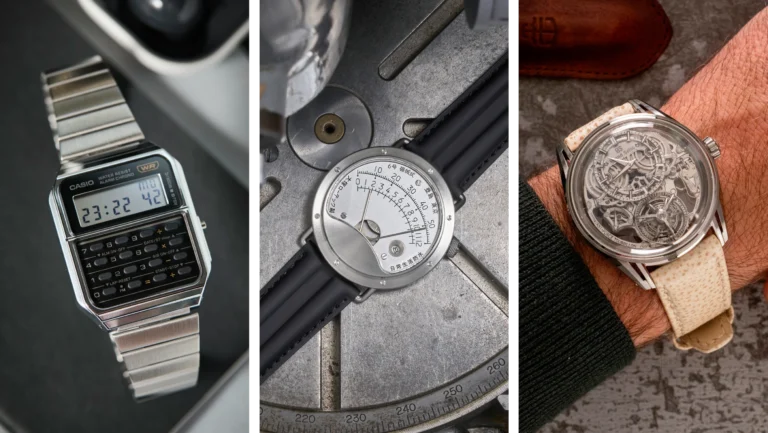Borna Bosniaks
Japan has played many important roles in the history of watches, including introducing the first automatic chronograph, developing a watch durable enough to double as a hockey puck (we’ll bet you can’t guess what that was), and pioneering the next step in movement technology with the Spring Drive movement. Naturally, most people will remember Japan as the main culprit behind the biggest upset in watch history when Seiko sparked the Quartz Crisis, but the level of craftsmanship and precision in Japanese watchmaking goes far beyond that. From the humble G-Shock and Bambino to the exquisite Credor and Nakagawa, read on to discover the best that Japanese watchmaking has to offer.
Casio and G-Shock

While it’s certainly not the first, there’s no better place to start than Casio. Founded in 1946 by Tadao Kashio, the company’s origins lie in small electronic devices and calculators, not watches. Though Casio wasn’t a watchmaker for nearly 30 years after its founding, it released its first watch, the Casiotron, in 1974. Its most popular watch series is undoubtedly the G-Shock, which began life in 1983 with the DW-5000C. This is the oldest model of the Square G, and today’s most advanced Square G-Shock models still follow this watch.
If you haven’t noticed yet, the hockey puck replacement is actually a G-Shock, used in an ad to highlight the ruggedness of the watch (attached above for your viewing pleasure). The ad was reproduced by a television news station in response to false advertising claims, and it passed with flying colors. You can see the full story of G-Shock’s latest extreme testing here, and be sure to check out the entire collection at Casio and G-Shock T+T Shop.
Borna’s Pick: Casio G-Shock GW-M5610. Price: $150
Orient

Orient is often considered a sort of little brother to Seiko (spoiler alert for another entry on this list). That’s true considering Seiko Epson owns the brand, but it belies the brand’s 100+ year history. Founded in 1901 by Shogoro Yoshida, Orient began producing its own watches in its own factories shortly before the start of World War II, but was forced to restructure after the war. The famous Orient Star was introduced in 1951, paving the way for the brand to spread around the world following a trade agreement with China in 1955. While the brand is best known among enthusiasts for its affordable diver watches, the Royal Orient line, introduced in the early 2000s, featured appropriately decorated COSC-certified hi-beat movements. However, its early demise allowed Orient to establish itself as a great value-oriented watchmaker.
Borna’s pick: Orient Bambino 38 Small Second. Price: $290 USD.
Kyoto Hisae


Kuoe is a crowdfunding success story, having raised more than $85,000 for its Old Smith, a field watch inspired by those issued to the British Army in World War II. Using Seiko movements and offering a unique customization service from its Kyoto showroom, Kuoe has become increasingly popular among enthusiasts, and for good reason: founder Kenji Uchimura’s products are value-focused, with entry-level quartz watches starting at $260 and the triple-calendar Royal Smith at $859.
Borna’s pick: Kuoe Old Smith 90-002. Price: $541 USD
Otsuka Rotec
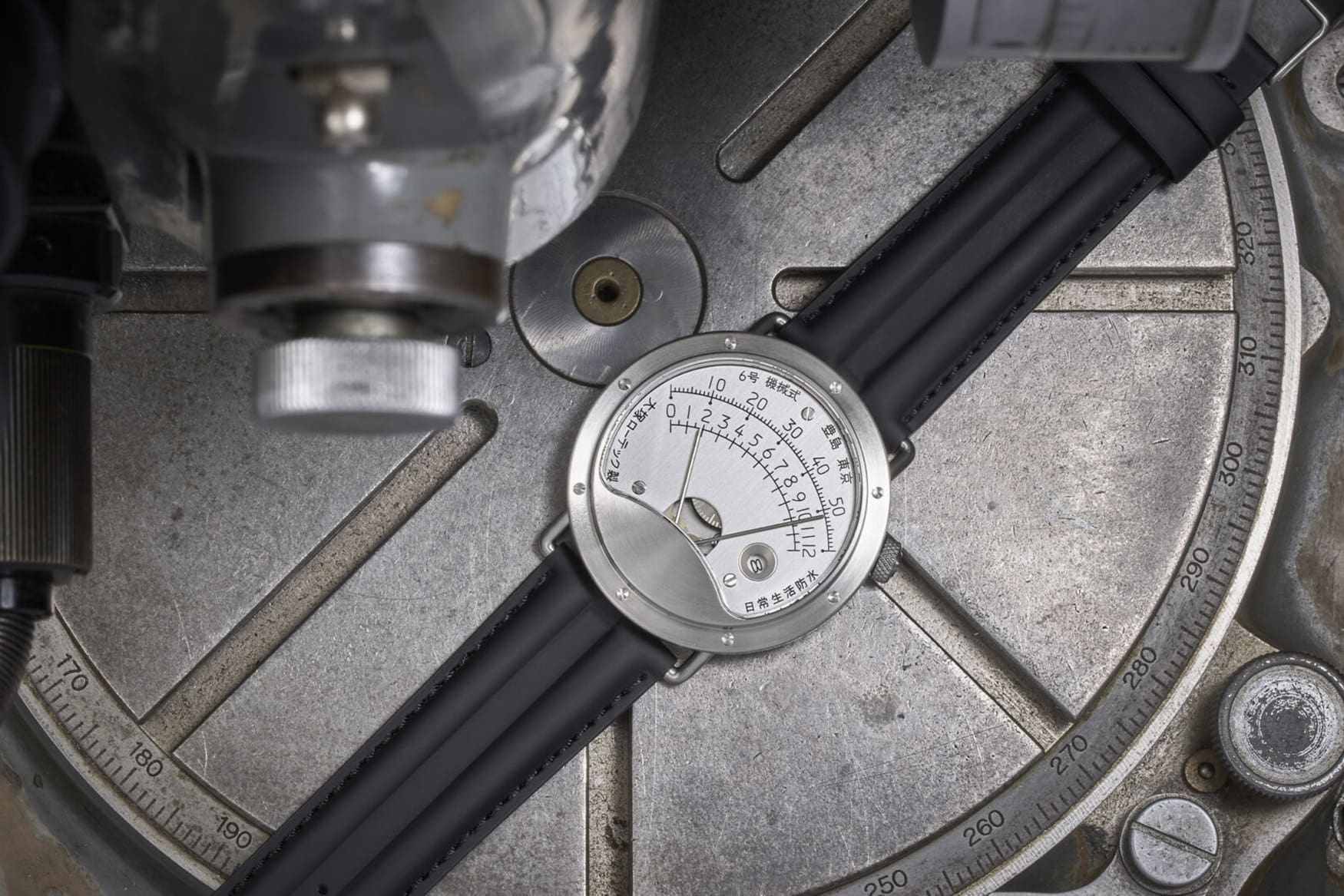

This watch is cool, but we’ll be the first to admit that it’s nearly impossible to buy if you live outside of Japan. Jiro Katayama began his career as an automotive and product designer, and this industrial approach is immediately apparent in his watches. A self-taught watchmaker, Katayama draws inspiration from gauges and cameras, and in collaboration with Precision Watch Tokyo, he develops unique modules that sit atop Miyota-based calibers.
Borna’s pick: Otsuka Rotec No. 6. Price: 440,000 yen (approx. $2,950 USD)
Citizen

Though Citizen is entirely a Japanese company, the brand’s origins date back to 1930, when a consortium of Japanese and Swiss investors acquired the Shokosha Watch Research Institute. Over the next six years, the brand set up a mass production factory and evolved to produce one quartz movement per second today. But there’s more to it than just cost-effective quartz. Citizen is best known for owning Miyota, Alpina, and Frederique Constant, but it has also developed its own line of luxury models, including the Chronomaster and The Citizen.
Borna’s Pick: Citizen AQ4100-65W. Price: $4,300 USD.
Seiko, Grand Seiko, Credor

Well, maybe I cheated a little by putting three in the same entry, but it’s my list, so what? The Seiko Group is one of the few groups that can claim to make everything from the entry-level Seiko 5 to the top-of-the-line Credor Eichi to the historic Seiko Pogue. The oldest and most well-known Japanese watch brand dates back to 1881, when Kintaro Hattori opened a watch and jewelry store in Ginza. Just over a decade later, in 1892, the Seikosha brand saw the light of day. Seiko is also responsible for making the first Japanese wristwatch with the launch of the Laurel in 1913, and the rest is literally history. Legendary names like Marvel, Seiko 5, the very romantic SKX, and Astron followed, and Seiko has become one of the most respected names in watchmaking today.
Borna’s Pick: King Seiko KS1969 SJE115. Price: $3,100

But it’s not all Seiko. In the 1950s, Suwa Seikosha proposed to product manager Tanaka Ren a high-precision movement aimed squarely at beating the Swiss. The name Grand Seiko was born from this discussion and was meant to be the best of Seiko’s offering. Today, the brand’s claim to fame is its Spring Drive movement technology, which combines the finest mechanical movement finishing with the precision of a quartz oscillator in the escapement. Alongside Spring Drive, Grand Seiko manufactures some of the finest quartz movements on the market, as well as a selection of high-beat mechanical calibers. Unveiled in the 2022 edition of Watches & Wonders, the Grand Seiko Kodo Constant-Force Tourbillon was the brand’s first high complication made in true GS style.
Borna’s pick: Grand Seiko Evolution 9 Spring Drive GMT “Mistflake.” Price: $8,400

And then there’s Credor. The Seiko Group’s best, greatest and greatest. The name Credor was coined in 1974 from the French crête d’or, meaning a golden crest or crest. The name also served as the inspiration for the logo. The brand started in precious metals but now also offers stainless steel, most of which are still aimed at the domestic Japanese market. Notable pieces include the Eichi, known for its hand-painted porcelain dials, and the Spring Drive Sonnerie seen above. A detailed description of this watch would require an article all by itself, so I recommend another excellent decon from The Naked Watchmaker.
Borna’s pick: Credor H II Luli Edition. Price: GBP 50,000 (approx. USD 63,600)
Minase


If you’re a fan of artisanal dials and innovative case designs, Minase might just be the brand you’re looking for. Its shapes have evolved from classic round and square shapes to include accented lugs and unique integrated bracelets. But it’s the dials where the brand shines, especially in its Masterpiece collection, which uses a seven-window case that offers ample views of the dial through seven windows, highlighting a domed surface that’s intricately covered in lacquer.
Borna’s pick: Minase 7 Windows Hakosse Steel. Price: CHF 15,218.20 (approx. USD 17,500)
Kurono and Hajime Asaoka

Capitalizing on the know-how of a luxury watchmaker, the Chrono is one of the most significant microbrand success stories of the last few years. Designed by watchmaker Hajime Asaoka and powered by a Miyota 9000 series movement in a beautiful 37mm case, every model released by the brand is highly anticipated and sells out within minutes, sometimes seconds (except for anniversary models). For tips on how to get your hands on a Chrono for yourself, check out the opinions of our resident experts.
Borna’s pick: Chrono Tokyo 2021 Anniversary Toki. Price: $1,738 (sold out)

The maker of the aforementioned chrono, Hajime Asaoka, is a self-taught craftsman and the first non-Western member of the AHCI. To give you an idea of the scale of his production, he produces no more than 20 watches per year, with prices starting at around $40,000. His work has gained attention with the release of stunning skeletonized chronographs, where he has built chronograph mechanisms from scratch and housed them in compact 38mm x 11mm cases. The upcoming Tourbillon Noir will be his magnum opus.
Borna’s recommendation: Hajime Asaoka Tourbillon Pla. Price: POA
Naoya Hida store
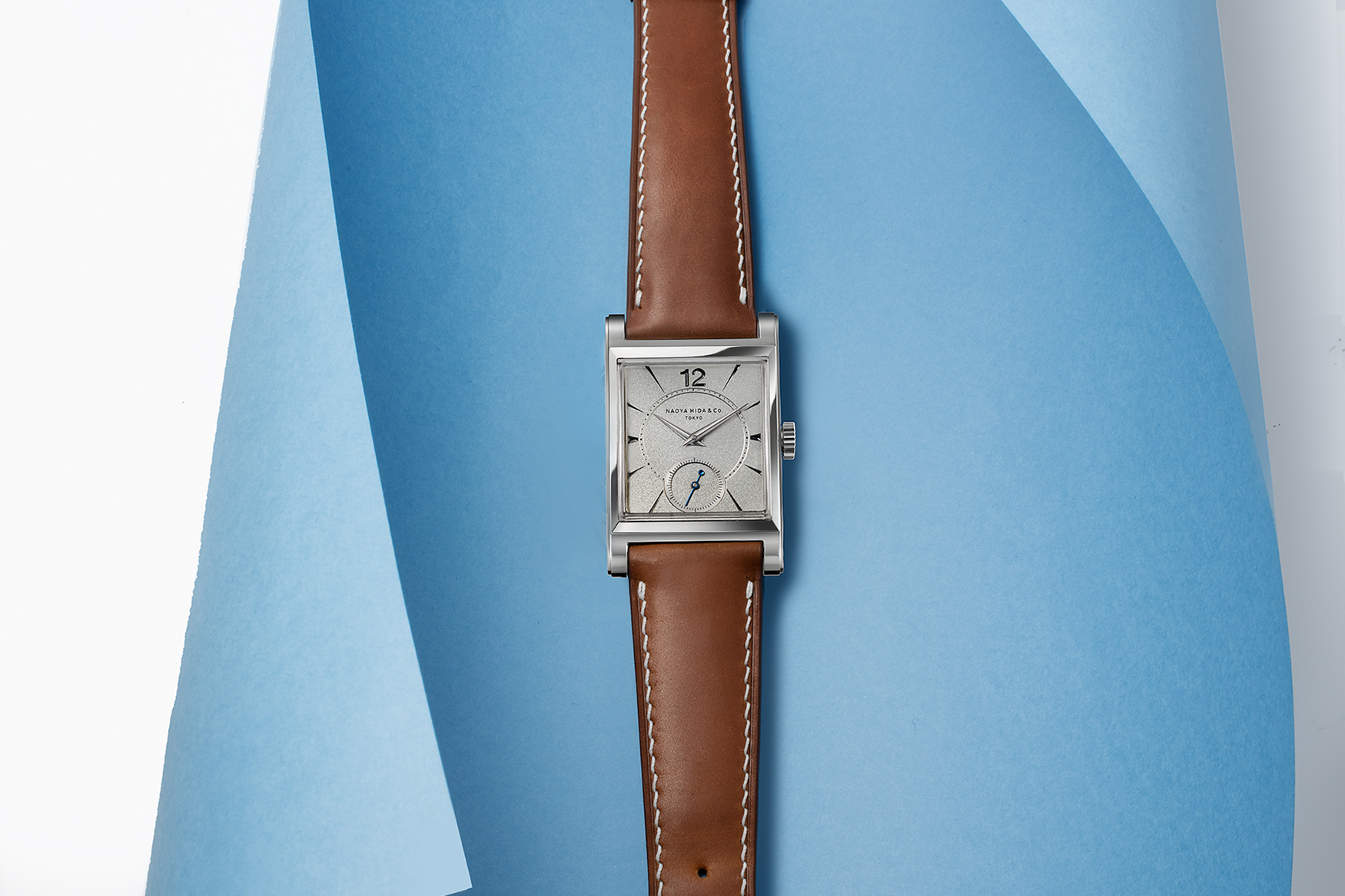

In the pantheon of Japanese independent watchmakers, Hida Naoya is one watchmaker that has been gaining increasing recognition since partnering with Hong Kong fashion brand The Armory. Inspired by stone engraving artisans, the company’s Lettercutter has been acclaimed for its dial finishes. The brand was founded in 2018 by Hida Naoya, who has experience in luxury watch sales and marketing, in partnership with watchmaker Fujita Kosuke and sculptor Kano Keisuke. The latest developments include the brand’s first rectangular case and dial elements in semi-precious stones.
Borna’s pick: Naoya Hida NH Type 5A. Price: 3,300,000 yen (approximately 22,000 USD).
Kikuchi Nakagawa
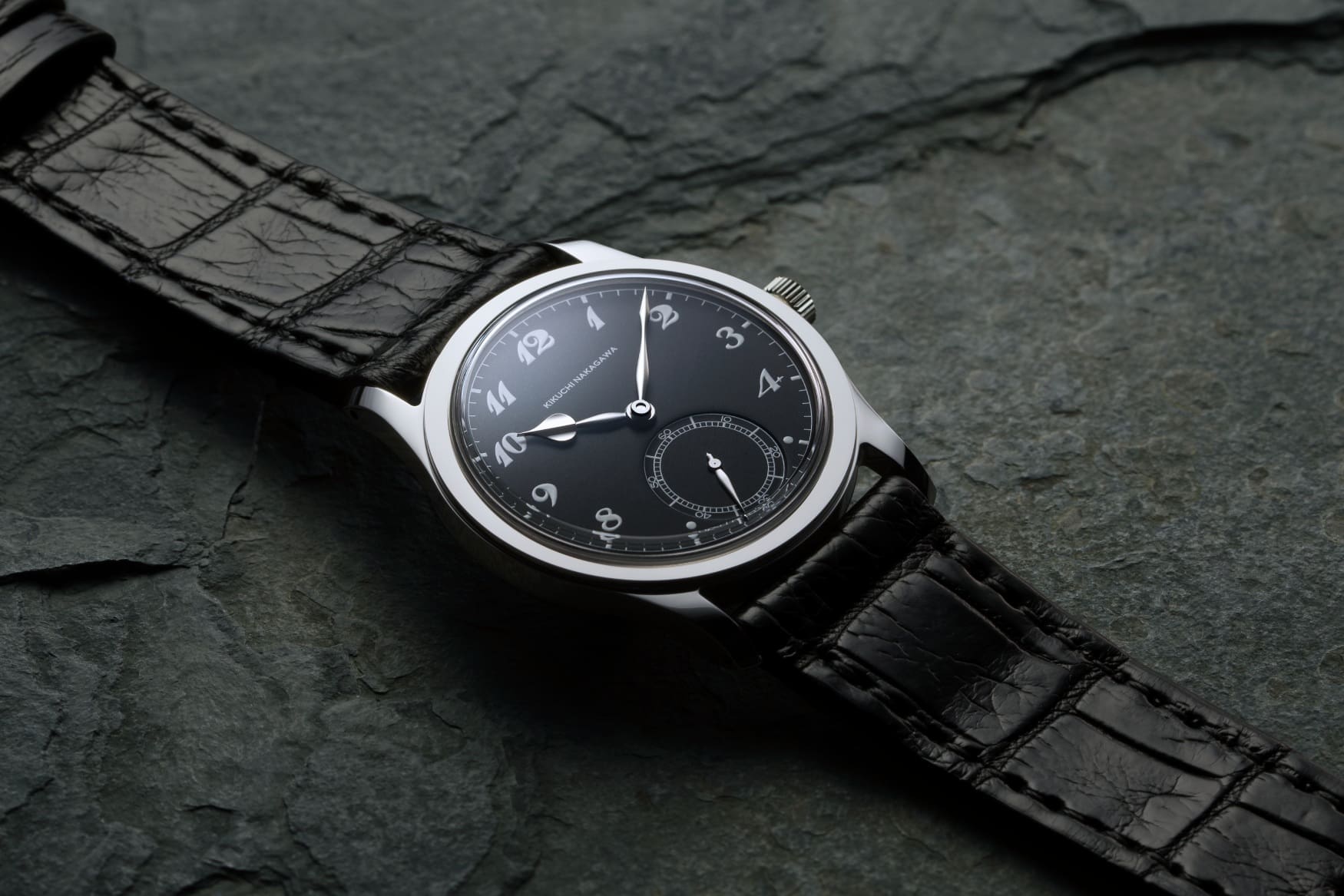
Spearheaded by the duo Hiroki Kikuchi and Tomonari Nakagawa, their eponymous brand was founded in 2018. Both men came to the world of watchmaking via different paths: one from software, the other trained as a swordsmith. One look at the Murakumo in the photo above tells you this is a very serious watch (it’s also my desktop background). The Calatrava ref. 96 inspiration is clearly visible in the 36.8mm steel case, but a closer look at the details will leave you staring deeper. The brand’s Instagram page often showcases close-ups of the tiniest parts that make up the watch, with the finest polished finish. Just look at those hands! Both Ichimonji and Murakumo use the Vaucher KN001 caliber, a micro-rotor movement that’s just 2.6mm thick, and other manufacturing partners (including Kari Voutilainen’s Comblémine SA, who was responsible for the dials) are clearly listed on their websites. Unfortunately, ever since Ed Sheeran declared his love for the brand (Ed, I was the first!), they have stopped taking orders indefinitely.
Borna’s pick: Kikuchi Nakagawa Murakumo. Price: $23,000.
Daizo Makihara
Daizo Makihara studied at the same watchmaking school as the next watchmaker on this list, and his work focuses primarily on hand-engraved dials. The Kikuzakura above is a glass crystal dial with traditional Japanese Edo Kiriko engraving on the front. The 18K pink gold case measures 42mm, and the watch retails for 5.58 million yen. Another of his creations, Beauties of Nature, features an automatic petal mechanism that opens and closes brass flowers every 12 hours. This price may also be justified, as Makihara’s work has been praised by the almighty Philippe Dufour.
Borna’s pick: Daizo Makihara “Beauties of Nature.” Price: 25,246,000 yen (approx. $170,000 USD)
Masahiro Kikuno
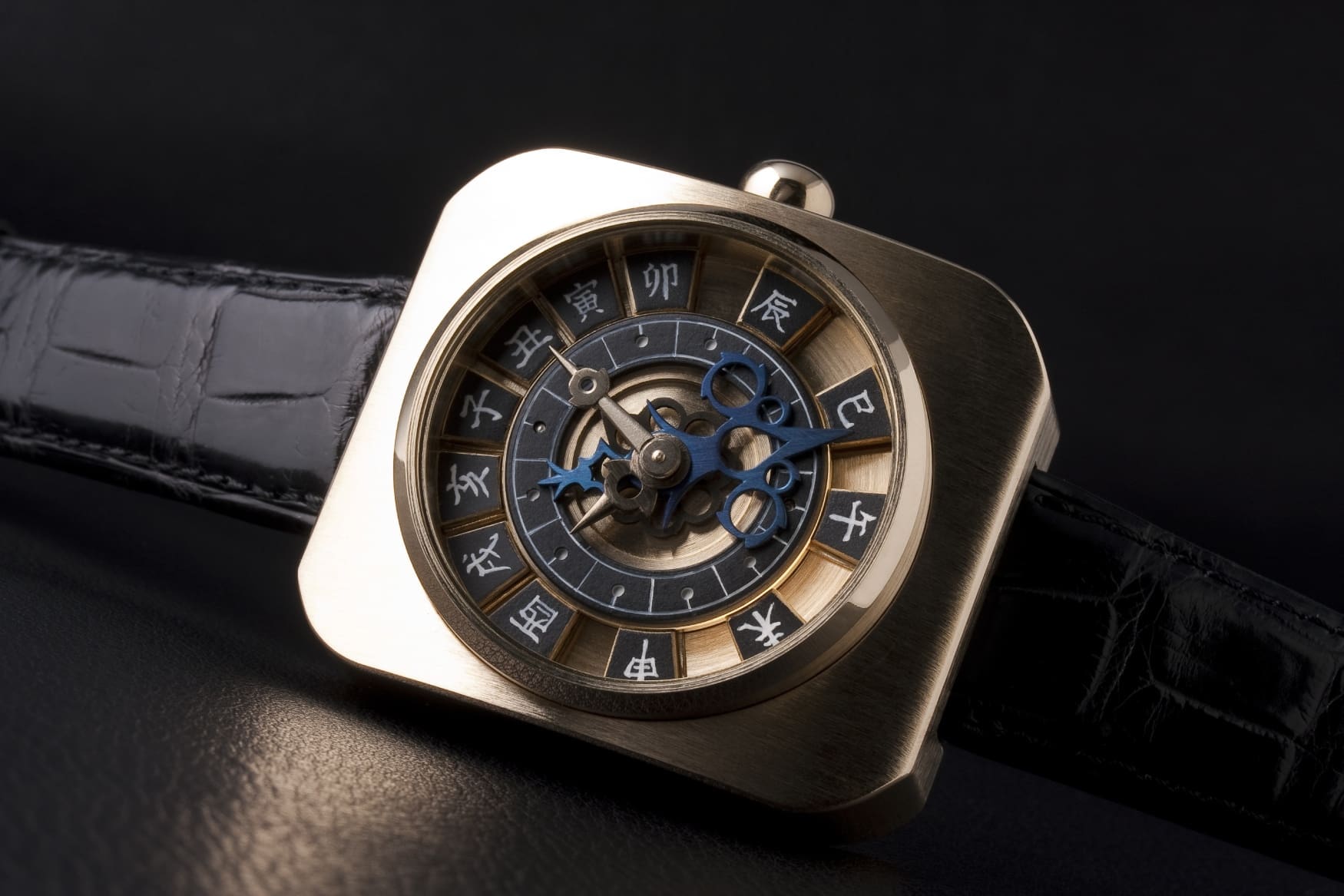
Masahiro Kikuno, like Daizo Makihara, is a graduate of Hiko Mizuno College of Jewelry and one of the youngest members of the Academy of Independent Watchmakers. His studies were mainly focused on repair rather than making, so he turned to George Daniels’ watchmaking and taught himself how to make watches. His claim to fame was in 2011 when he turned Hisashige Tanaka’s chronograph into a wristwatch, which was made entirely by hand and adjusted specifically for the buyer’s latitude, and was priced at around $160,000. At the moment, Kikuno is not accepting any offers and has no prospect of resuming sales, but earlier this year he unveiled “The Complication,” a watch with a minute repeater, tourbillon and chronograph, but the price and release date are yet to be determined.
Borna’s recommendation: Complications by Masahiro Kikuno. Price: Probably quite expensive.
